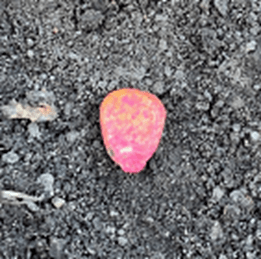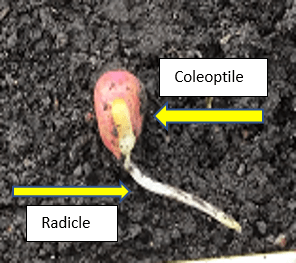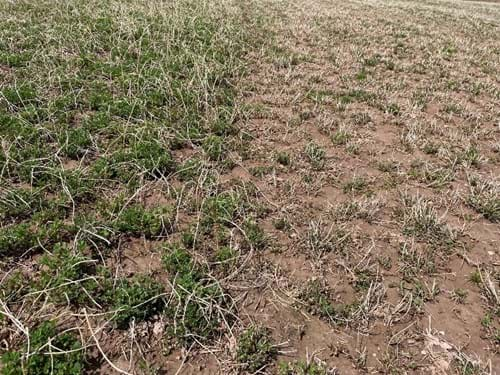Plant 2022 Underway
BY Dairyland Seed Agronomy Team
THE FIRST FEW HOURS OR DAY OF PLANTING
Corn has been planted in a few areas across the Corn Belt, so this message maybe on the late side for those that have started. With that being said, if you haven’t started planting yet or even if you have a few acres in the ground, take some time to step out of the tractor cab, get behind the planter and start checking how good of a job the planter is doing. You only get so many chances in a farming career to put a crop in the ground, so we need to do it correctly. What you get right or, in some cases wrong, in the spring with the planter, either increase or decrease yield.
- Depth: Is the depth where you want it to be? Is it at a consistent depth from seed-to-seed as well as row-to-row? Most corn planting recommendations are 1.5 to 2 inches in depth. I prefer to be closer to the 2-inch depth which is after the soil has been compressed over the row with a foot or hand print which lessens the air above and around the seed. This process mimics what the seed depth would be after a rain or a few days of a breeze and the soil settling.
- Seed Spacing: Today’s monitors do an outstanding job of measuring and recording spacing. However, the phrase “Trust but Verify” or “ground truthing” to make sure the monitor is accurately measuring seed placement is what we need to do. Remove soil on two to four feet of row and measure the distance between seeds to see if it is at the distance you want.
- Seed Shut-Offs: If you are utilizing a GPS monitor that has shut-offs, check to see how close they are engaging as you come off or approach the headlands/end rows. Properly calibrated seed shut-offs reduce over planting in the headland as well as engaging them at the proper distance in the field so you don’t have a gap coming into or off the headland. Properly calibrated seed shut-offs may not only help reduce seed cost from overplanting, but may also increase yield due to proper seed spacing. Properly calibrated seed shut-offs may also decrease some of the spirited discussions at local gathering places.
- Seed Placement: Is the seed placed in the bottom of the seed furrow in a consistent manner? If not, it may not be accessing nutrients or crop protection products, such as fungicide or insecticide, as efficiently and not receiving their full intended benefit.
- Soil Firming: Is the soil firmed around the seed? Closing wheel type and down pressure can make a big difference. Soil firmed around the seed will provide more consistent water imbibition and subsequent germination and emergence.
- Check every row on the planter: Not every setting is the same on each row unit all the time.
- Now check your settings and depth in a different part of the field or soil type and adjust those settings to maximize planter performance in varying soil types.
By taking time in the first few hours or first day of planter activity in the field, to tweak and fine-tune your planter to perform at its optimum, provides you the best chance for success for your crop.
CORN GERMINATION AND EMERGENCE
In the last week to ten days, some areas have had favorable weather allowing farmers to plant corn. A corn seed has a few processes it needs to accomplish prior to soil emergence. One of the processes is germination which takes place when a seed takes in or imbibes roughly 30 percent of its weight in water. During this process, the seed will swell slightly. In most instances germination, or seed swelling, takes roughly 10 to 20 Growing Degree Units (GDUs). This is shown below and on the left.


Once germination has initiated, the radicle root will start to emerge. It normally takes 30 to 40 GDUs for the radicle root to emerge. (This is shown in the photo above and on the right). The radical always emerges from the tip of the embryo and will orient itself due to gravity so it is growing down, regardless of where the embryo of the seed is pointed. The ability of the plant to sense gravity is called Gravitropism or Geotropism.
The next process to take place is for the coleoptile to emerge from the seed (as shown below and on the left). It normally takes 50 to 60 GDUs for the coleoptile to emerge from the seed. Starting between 60 to 70 GDUs, the seminal root system will start to emerge from the seed and almost immediately start taking in water and nutrients for the plant to continue to grow. The seminal root system and the radicle will anchor the plant and act as the main root system for the plant until VE (shoot/spike coleoptile emergence) and will continue to grow until V3 (three collared corn).


It normally takes 100 to 150 GDUs for the coleoptile to emerge (VE) from the soil surface (as shown above and on the right) with weather conditions and genetic makeup being factors affecting this process. At VE, the coleoptile will cease to elongate and the foliage that follows will be the embryonic leaves.
|
Plant / Leaf Stage |
Growth Stage |
GDU's |
|
Germination |
10 to 20 |
|
|
Radicle Root Emergence |
30 to 40 |
|
|
Coleoptile Emergence Seed |
50 to 60 |
|
|
Seminal Root Emergence |
60 to 70 |
|
|
Coleoptile Emergence Soil |
VE |
100 to 150 |
ALFALFA WINTER SURVIVAL AND FALL CUTTING
While the decision to take a late alfalfa cutting in 2022 is many months away, now is a good time to reflect on decisions made last fall. We are observing increased winterkill on late harvested fields across much of northern Indiana, Michigan, northern Wisconsin and into Minnesota.
To understand this, think of the alfalfa root as a gas tank for regrowth. After harvest, alfalfa pulls energy from its root stores to regenerate new growth above ground -- draining the gas tank. When the stand returns to approximately 8 inches in height, the root energy reserves (the gas tank) will be fully restored. If the stand is cut late and the growing season ends, not allowing 8 inches of regrowth, the crop will enter winter in a weakened state. This opens the door for survivability issues.
Taking a late cutting isn’t always a bad thing. It can be a calculated risk we are willing to take. Maybe it’s an old stand that we wouldn’t mind terminating anyways. Or maybe we need the tonnage to top off feed supplies. We just need to know what we are getting into. Weather also plays a big role; snow cover was limited this year, which didn’t help.
If you still have stands to assess, target those where late cuttings were taken. Look for heaving or plants that are struggling. Many of the struggling plants are dealing with root rot issues. Dig up the plants and search for any mushy, off-color roots. Roots should be white, firm and smell like fresh cut alfalfa when torn open. Full yield potential stands will have 50 to 55 stems per square foot, while 80 percent yield stands will have ~40 stems per square foot. Much below that and we might want to consider taking action to fix or replace a stand. Give us a call if you need help working through these issues.

Figure 1. Increased winterkill from an October 2021 cutting (right) vs. an early Sept. cutting (left) near Manitowoc, WI
 |
 |
 |
 |
 |
| Brian Weller Western Region 507.456.3034 |
Dan Ritter Central Region 219.863.0583 |
Branden Furseth Northern Region 608.513.4265 |
Mark Gibson Eastern Region 260.330.8968 |
Amanda Goffnett Eastern Region 989.400.3793 |
